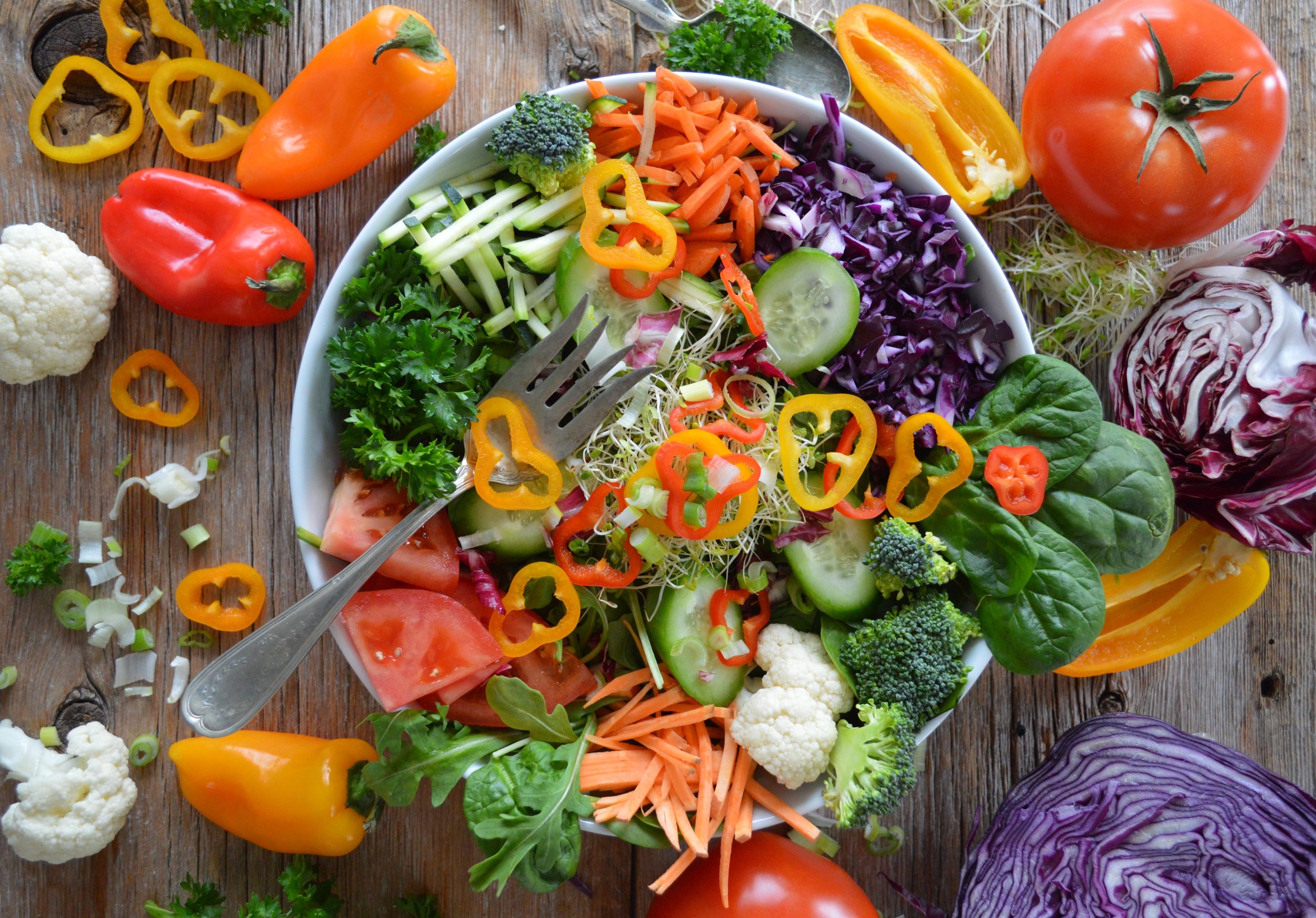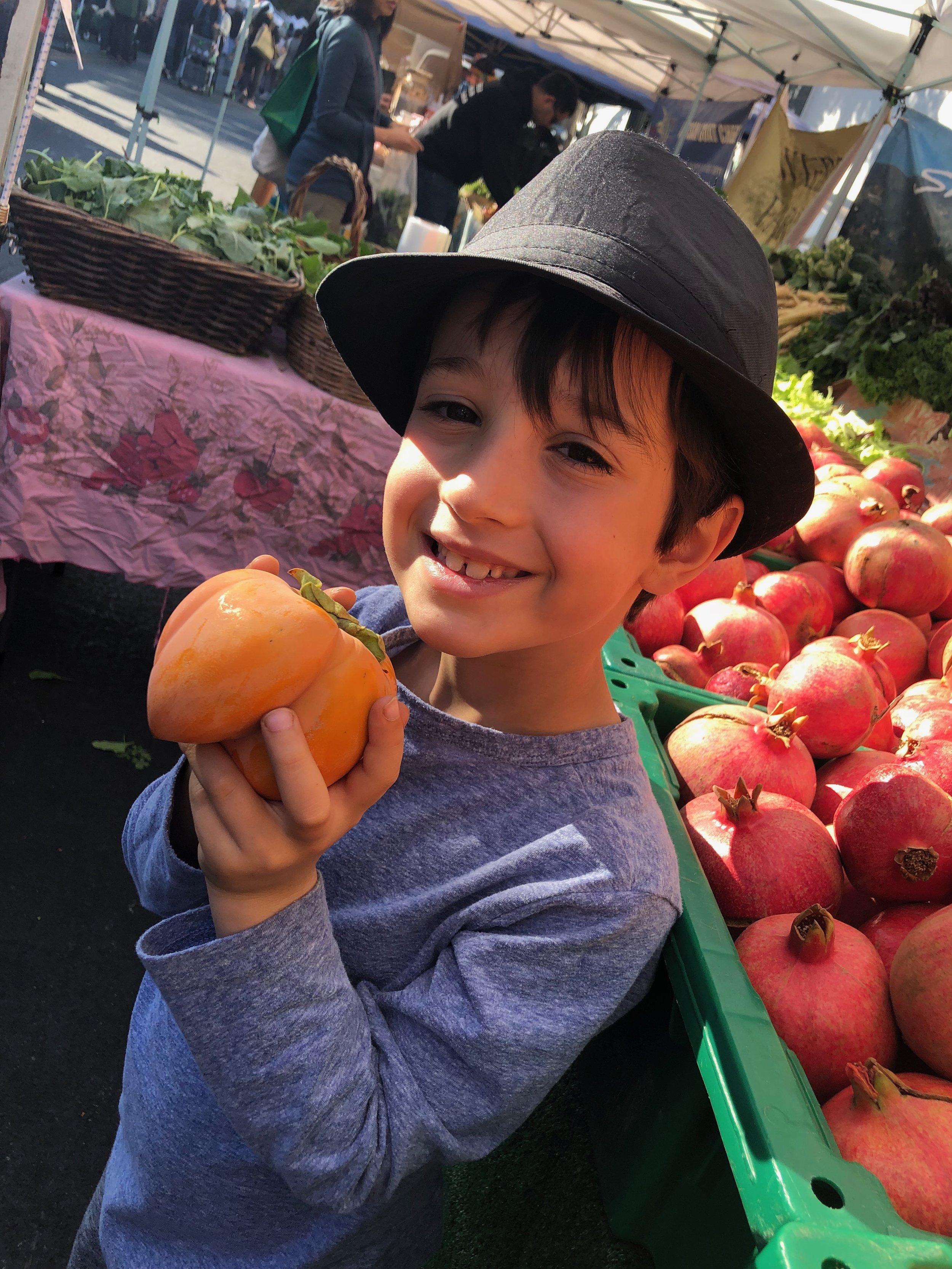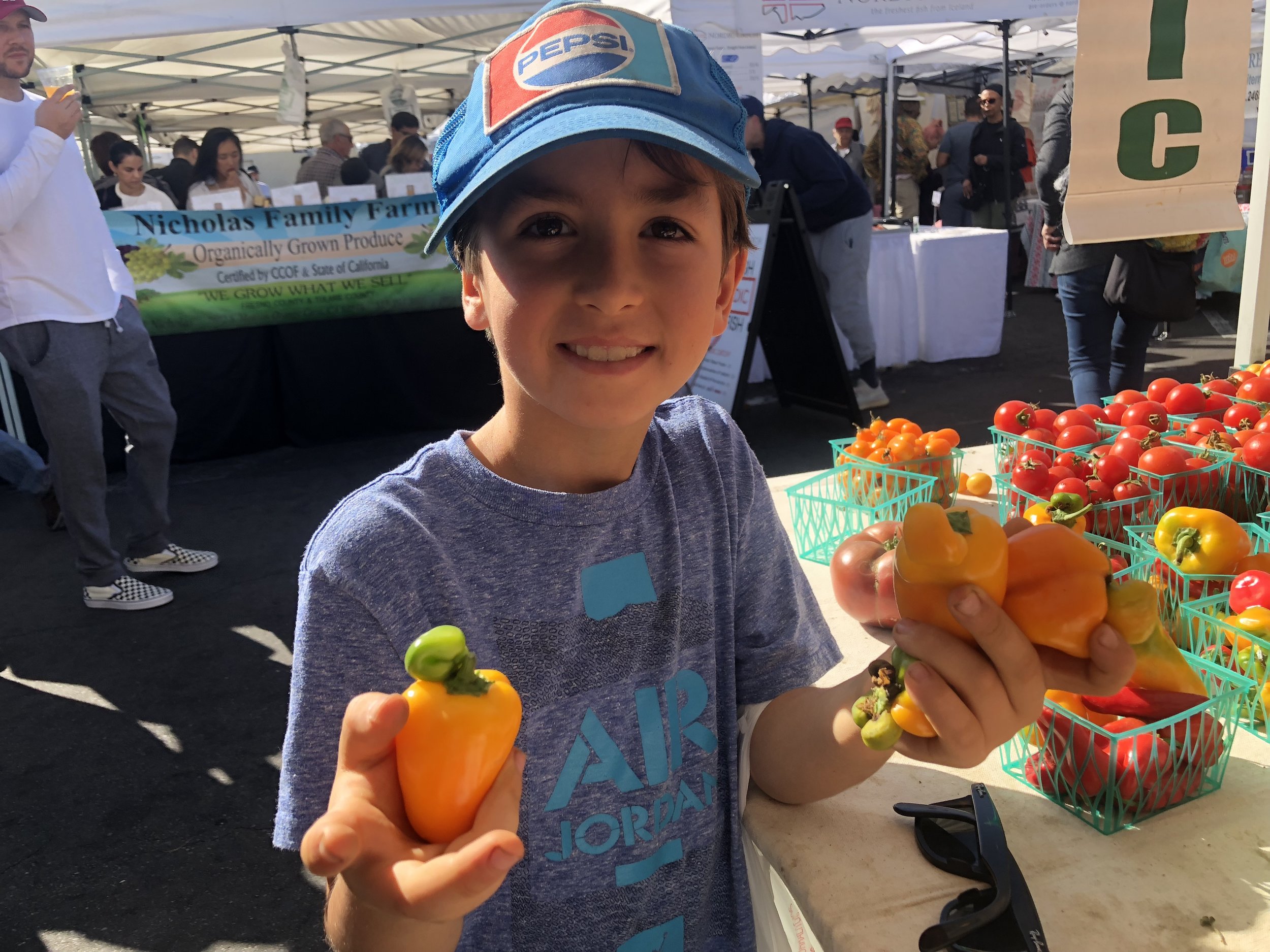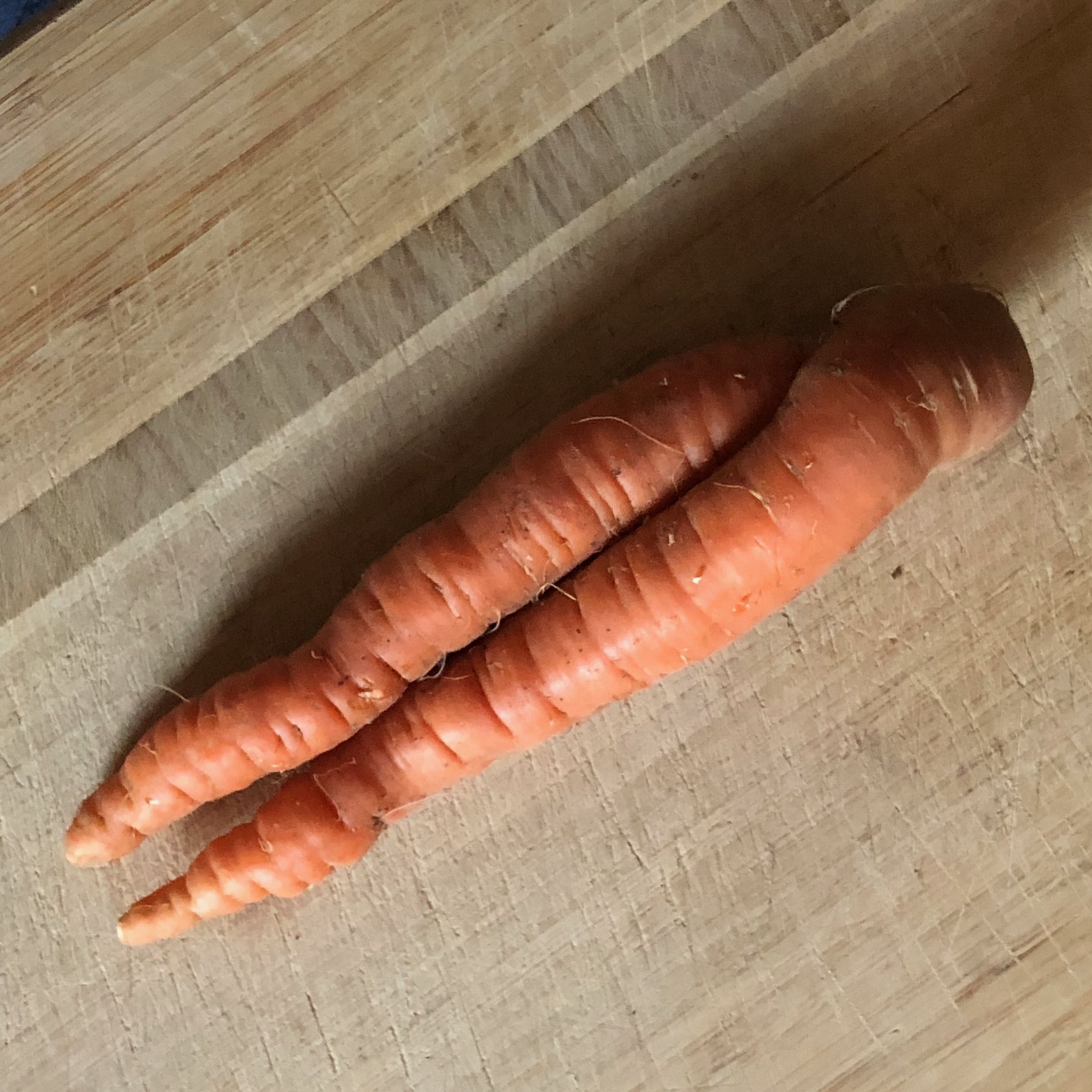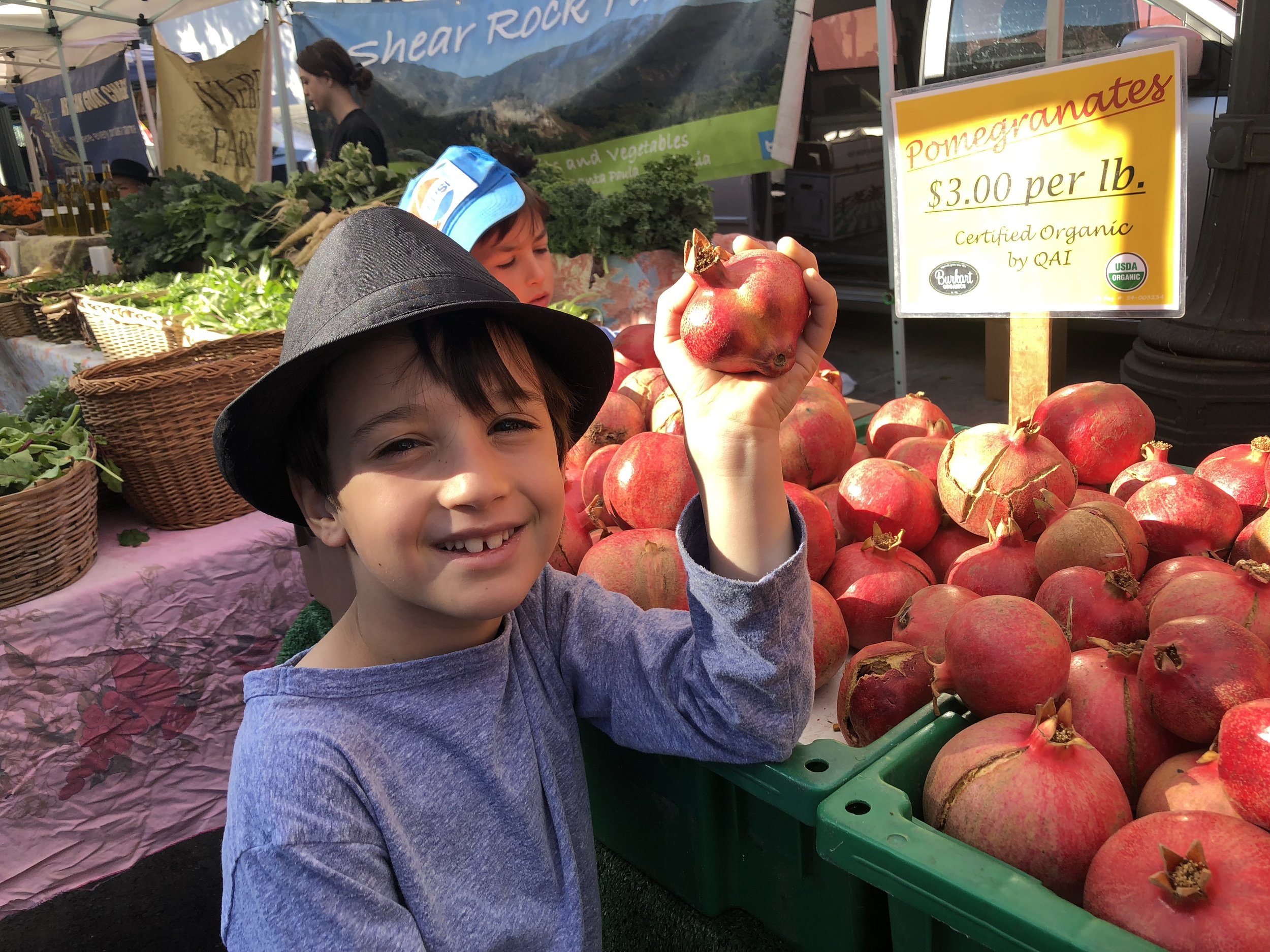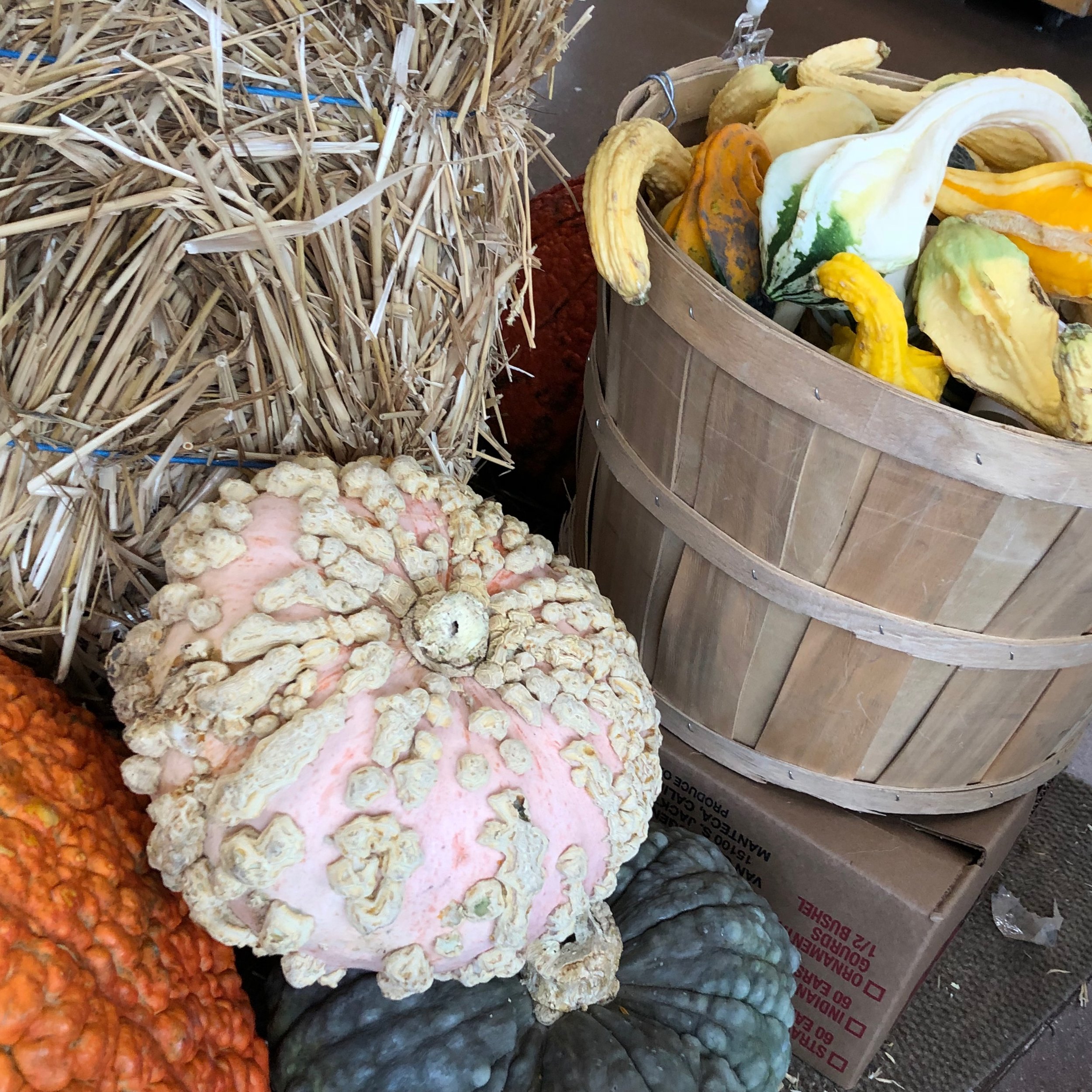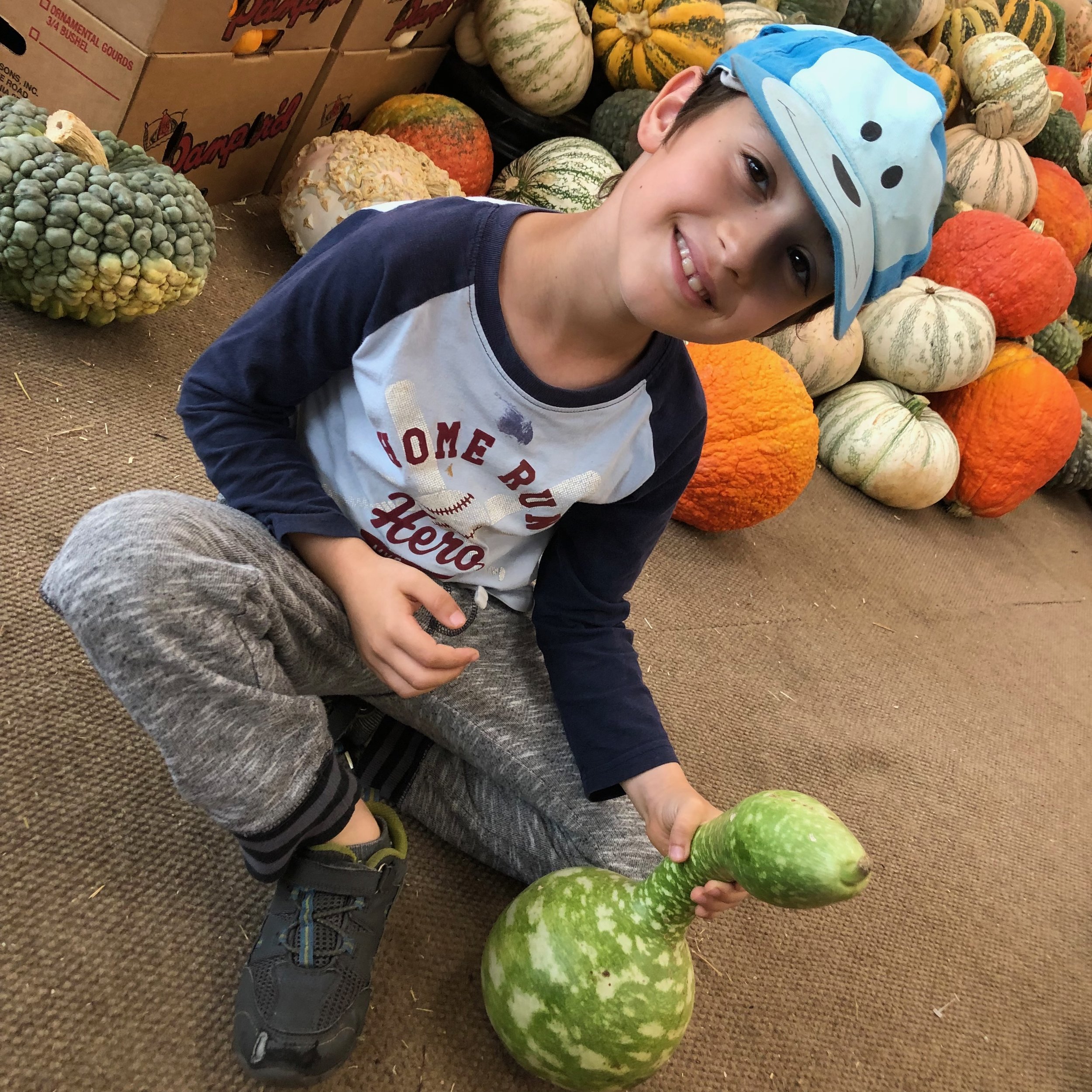The Whimsy Of Imperfect-Looking Produce
/This past Sunday, my kids had a field day exploring all the imperfect-looking produce they discovered at our two favorite Los Angeles-area farmer’s markets, Larchmont and Hollywood. We were greeted by numerous fruits and vegetables that were either conjoined twins or had whimsical-looking appendages. Perhaps it was the proximity to Halloween.
In just one visit, we found:
Persimmons and bell peppers with protrusions
Conjoined delicata winter squash
A conjoined carrot in the shape of a woman’s waist, with legs crossed (!)
Heirloom tomatoes that were bursting at the seams
Oversized Wonderful pomegranates that were cracking apart because of the sweet, juicy seeds inside
Undersized white Paper Shell pomegranates (ironically, these were the tastiest of all the poms!)
Apples with bumpy skins and inner cores that curve
Oranges with yellow blemishes
Gourds full of contortions, spikes and warts
it got me thinking: With the exception of the gourds, I’ve rarely, if ever, seen any of these others in an American supermarket. The gourds are associated with Halloween, so their disfigured, grotesque and ghoulish forms are in line with our expectations of how these fruits should look and feel. Ironically, most people purchase these for display purposes and then throw them away afterward. So they are a source of waste rather than food.
I’ve never quite understood what is repulsive or off-putting about fruits and veggies that are not perfect-looking. Nothing in nature is perfect. People come in all shapes and sizes. So do dogs.
Why not produce?
Real Produce Is Enchanting
Real produce runs the gamut from the whimsical to the grotesque. Once you move past the familiar story that produce always has to appear instagrammably perfect, you become conscious of the variety and character of imperfect-looking produce. The defects in the produce take on an enchanting quality. Developing this consciousness can be a powerful method for teaching kids to recognize fruits and vegetables in their natural state. It elevates the veggie experience from the mundane to the extraordinary.
The effect that perfect produce has on our minds is similar to that of the beauty industry on young women: When all you see are airbrushed, unblemished and impossibly thin bodies in fashion magazines, you begin to feel that your own body is less than adequate. Similarly, when you walk into a major American supermarket, you see rows and rows of beautiful produce with nary a bump, blemish or extra protrusion.
Unfortunately, according to ImperfectProduce.com, at least 20% of all the produce grown in the United States goes to waste because it does not look beautiful. Yet, these cosmetic defects have no effect whatsoever on the quality and taste of the produce. Imperfect Produce, the company, has done an amazing job bringing top-of-mind awareness to this problem in the United States. If you don’t have access to a farmer’s market, I wholeheartedly encourage you to subscribe to their grocery delivery service. And no, this is not a paid endorsement, just a recommendation to encourage my readers to take action on this subject.
How Do You Involve Your Kids In Developing A Passion Around Produce?
Every piece of produce, blemished or otherwise, tells a story. And kids love stories. First, take your kids to a farmer’s market to pick out some imperfect-looking produce. Then engage them around the dinner table. Ask them to pick a fruit or veggie. Tell them to imagine that each piece of produce is a character with an interesting back story. Have them consider its shape, size, color and texture. Let them take turns bringing these foods to life, as if it were a puppet show.
Bonus: Here’s some conversation-worthy stone fruits from the summertime.

